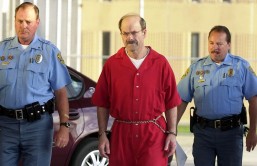Scientists noticed brain activity associated with consciousness continued for several seconds after death in rats.
The finding could explain why some people have near-death experiences, Wired reported.
"People have just assumed that, after the heart stops, when the brain has very little oxygen or glucose, then the brain should not function," said neurophysiologist Jimo Borjigin of the University of Michigan, leader of an experiment," said in the study, according to Wired.
The research team implanted electrodes onto the rats' brains and injected them with potassium chloride, rendering them clinically dead.
It is widely believed brain activity stops when the body is "dead" (no blood flow or heart beat), but the researchers observed brain activity for up to 30 seconds after death in the nine rodents.
The electrodes picked up "patterns of synchronized, high-frequency activity," also known as gamma rays. Some scientists this type of brain activity is associated with perception and consciousness.
Past research has observed a release of neurotransmitters at the time of death; this could also have a role in perceived near death experiences. The phenomenon could even be caused by a combination in the release of neurotransmitters and continued brain activity.
"We reasoned that if near-death experience stems from brain activity, neural correlates of consciousness should be identifiable in humans or animals even after the cessation of cerebral blood flow," Borjigin told the Telegraph. "This study tells us that reduction of oxygen or both oxygen and glucose during cardiac arrest can stimulate brain activity that is characteristic of conscious processing. It also provides the first scientific framework for the near-death experiences reported by many cardiac arrest survivors."
Critical care physician Sam Parnia of Stony Brook University is not as sure the study's findings shed light on what happens after the body shuts down, Wired reported.
Parnia believes the idea that the same patterns exist in the human brain is "extremely presumptive and unsupported by evidence."
Another problem is that some patients have reported have a near death experience "tens of minutes" after clinical death, the brain activity observed in the rats only lasted for around 30 seconds.
Future studies could revive clinically dead rats, and test if they can remember stimuli administered while in cardiac arrest.
Another question the study brings up is if consciousness requires less "oxygen and energy" than is commonly believed.








